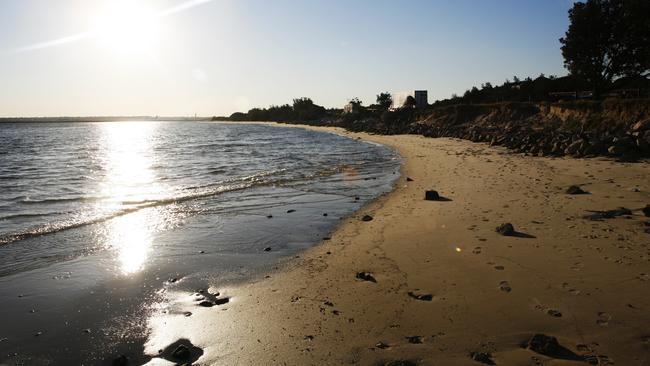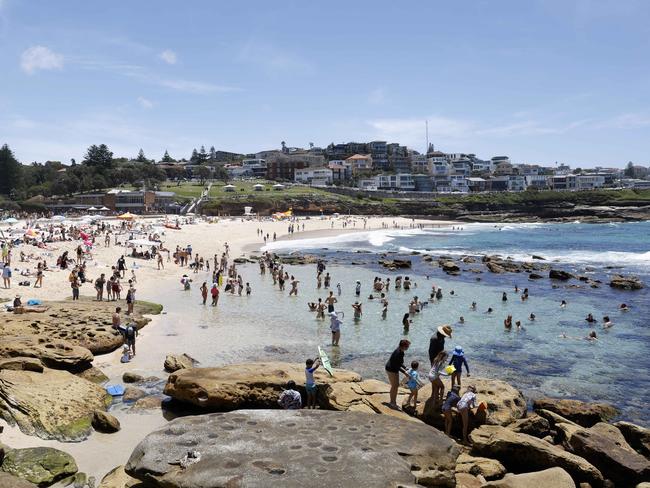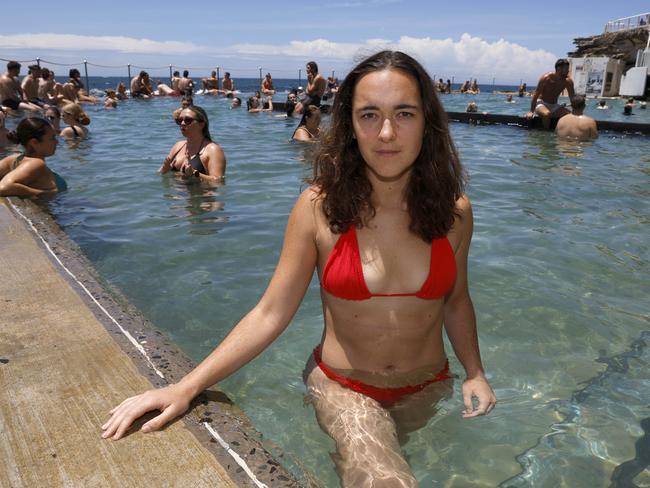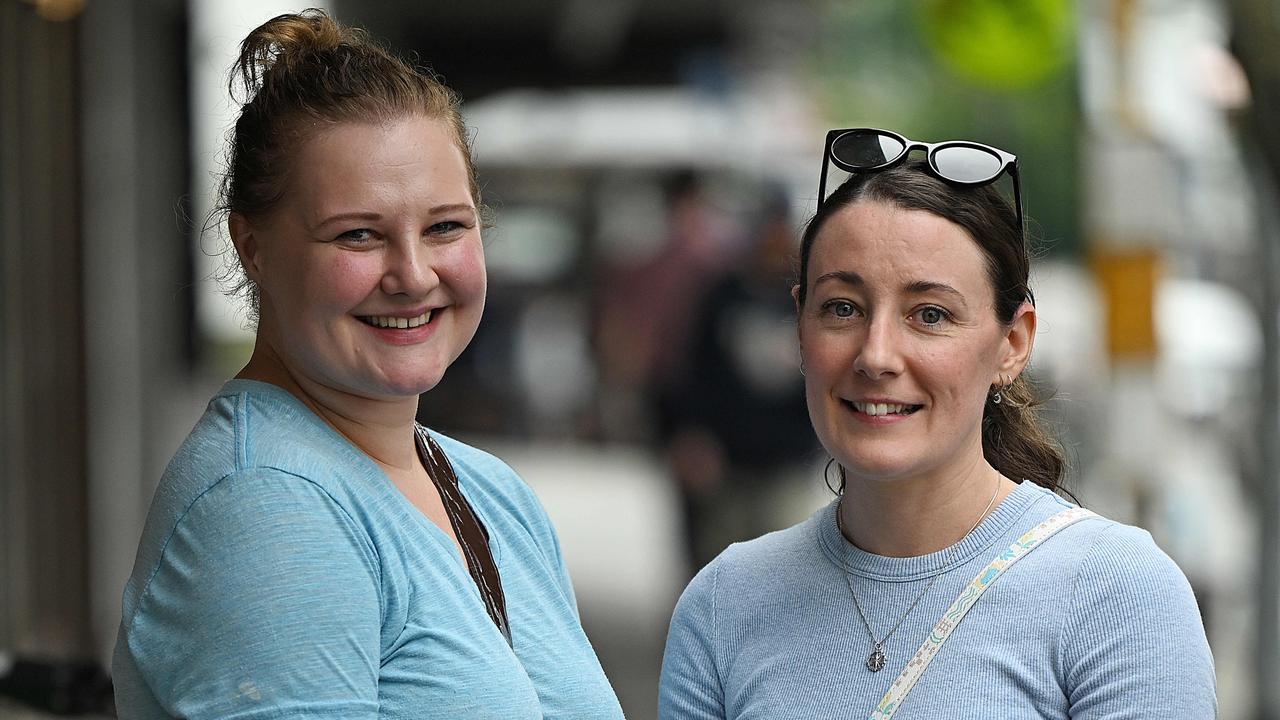Popular Sydney swim spots contaminated with ‘faecal matter’
Some of Sydney’s most iconic swimming spots are being exposed to massive levels of “faecal matter”, with some beaches reaching levels 75 times what is considered safe. Find out where.

NSW
Don't miss out on the headlines from NSW. Followed categories will be added to My News.
Sydneysiders flocking to some of the Harbour City’s most iconic swimming spots after rain are being exposed to massive levels of "faecal matter”, as new data reveals a spate of Sydney beaches reached levels of 75 times the “safe levels” of contamination.
The Daily Telegraph has obtained NSW Government BeachWatch water quality data, which reads the level of faecal matter in beaches, lakes and rivers across the state.
It uncovered 41 popular swimming destinations across Greater Sydney, the Central Coast and the Illawarra that regularly reported “poor” water quality results in weekly testing across the last year.
The Daily Telegraph can reveal Foreshores Beach on the eastern suburbs had an “enterococci reading” 350 times over the safe level of faecal matter for swimming, the popular Westworth Falls Lake swimming hole recorded readings 125 times over safe levels, while BeachWatch NSW testers recorded faecal matter readings 125 times over safe swimming levels at Queenscliff Beach.
According to the data, dozens of other swimming spots across Greater Sydney regularly recorded levels of faecal matter “exceeding the safe swimming limit” after little to no rain, with significant spikes of during Summer months in the last year.
Western Sydney University water quality expert Dr Ian Wright told The Daily Telegraph several sites regularly reached “dangerous levels of faecal contamination”, raising the alarm over massive increases in “enterococci levels” in popular beaches.
“City ocean beaches (such as) Bondi, Bronte, Coogee, Clovelly and Malabar all had much larger spikes of enterococci in January and February 2024,” Dr Wright said.
“This might be from overflowing sewage, stormwater or even the nearby ocean outfall discharges of treated sewage at Manly, Bondi and Malabar.
“The further a site is from the ocean — it becomes more likely that the water is contaminated after heavy rainfall. Some of the Harbour beaches and swimming enclosures, and other estuaries like Tuggerah Lakes, Lake Macquarie also show very high bacteria after periods of heavy rain.”
The water quality expert said “one in ten people swimming in beaches and watering holes with an enterococci reading over 500 would get sick”.
“We consider an enterococci reading under 200 to be reasonably safe to swim in, but several of our most popular destinations regularly exceed these levels throughout the year”.

Dr Wright said swimmers were regularly exposed to gastroenteritis at our beaches and ocean pools, as well as “skin diseases”.
“How sick a person gets depends on what pathogen is picked up, and also a person’s pre-existing health,” he said. “The very young, old and those with ongoing health problems are most at risk from serious illness.
“The other factor is what diseases are circulating in the community - and if water if affected by faecal material, it is possible to pick up some very serious illnesses.”
Dr Wright said people flocking to beaches and rivers after rain should be resigned to the fact that they are swimming in “faecal contamination”.
BeachWatch NSW data confirmed Bronte and Coogee beaches recorded “poor” water quality regularly over the last year.
“The Beach Suitability Grade of poor indicates microbial water quality is susceptible to faecal pollution, particularly after rainfall and occasionally during dry weather conditions, with several potential sources of faecal contamination including stormwater,” the report said.
Dr Wright called for Sydney Water to address a rising number of incidents where overflowing sewers were leaking into water catchments and beaches. “

A spokesperson for Sydney Water said that during heavy rain large amounts of diluted wastewater can enter the Sydney water network after being released by emergency relief structures.
“Overflow points are designed to allow excess wastewater to flow into waterways to ensure homes and businesses are protected from internal surcharges,” the spokesperson said.
“Sydney Water is currently delivering our Wet Weather Overflow Abatement program which aims to reduce the amount of stormwater entering the wastewater network.
“Additionally, we will continue to protect public health and the environment through large-scale asset upgrades and proactive maintenance.”
Sydney Water partners with several local councils that host swimming spots to provide water quality advice as part of its program to open up more swimming areas throughout Sydney.
Harper Luna, 24, said she regularly checks to see if contamination has been reported at Bronte Beach.
“I tend to avoid those areas and opt for other options,” she said. “So far I have not become ill after swimming in open ocean water in Sydney however if I became aware that I had swam somewhere that had been recently contaminated, I may be a little concerned.”
Meanwhile, Haymarket local Shelby Hays, 26, said she was concerned about the types of contamination.
“It’s a bit disgusting,” she said. “It feels like the plague, I’m surprised. I didn’t realise that it was that bad.”
“It’d make me a little bit more apprehensive of swimming in the water. I’d want to swim in a spot that perhaps didn’t have somebody’s poo.”
The calls to clean up Sydney’s swimming spots comes as nine Sydney beaches were closed on Tuesday after ball-shaped debris was found washed up along the shore.
Beachgoers are advised to avoid Manly, Dee Why, Long Reef, Queenscliff, Freshwater, North and South Curl Curl, North Steyne and North Narrabeen beaches until further notice and keep away from the material while the clean-up and investigations continue.
Water Minister Rose Jackson said the state government was open to exploring different ways water quality at Sydney’s beaches could be improved after rain.
“We are open to working with the community and Sydney Water to see what we can do to ensure our beaches are the best places to swim,” she said.
“During and after wet weather, we encourage all beachgoers to check the Beachwatch website.”
Do you have a story for The Daily Telegraph? Message 0481 056 618 or email tips@dailytelegraph.com.au
More Coverage
Originally published as Popular Sydney swim spots contaminated with ‘faecal matter’




